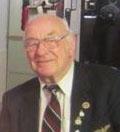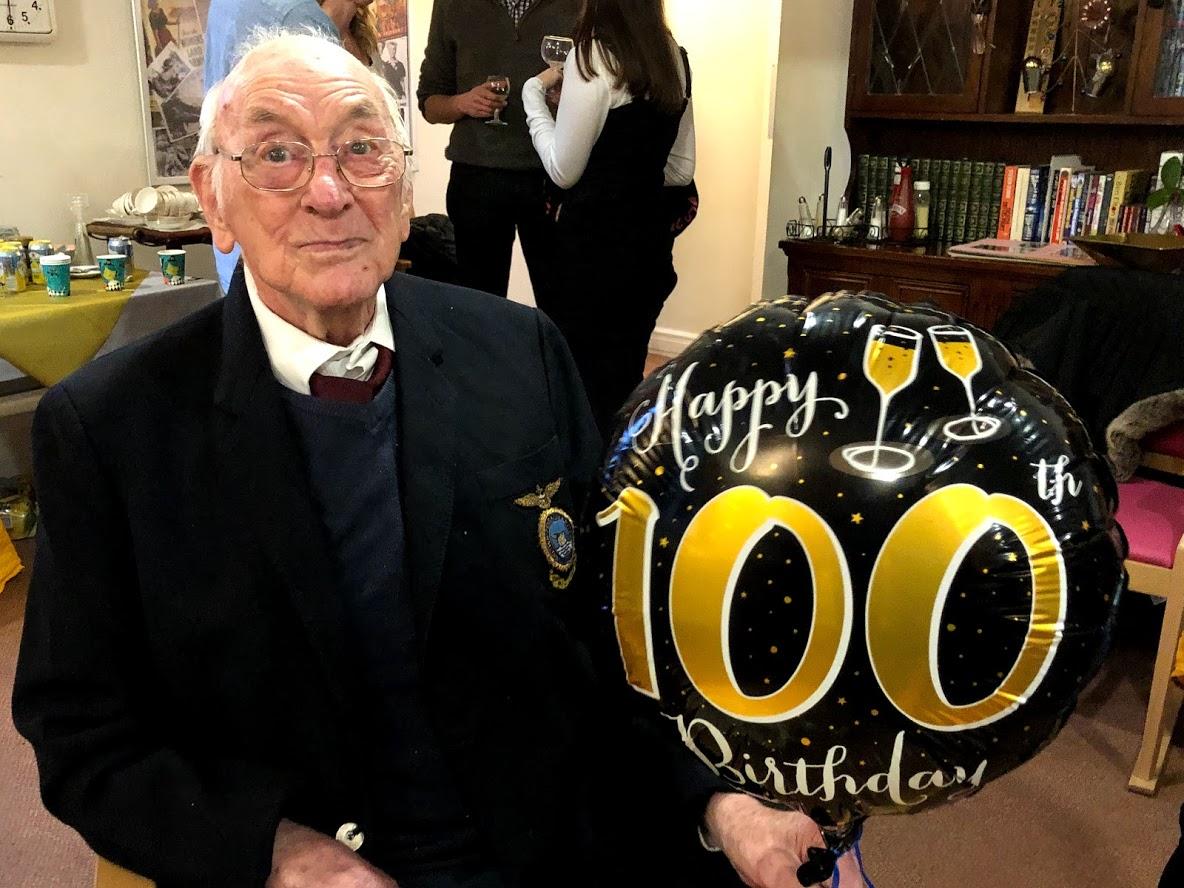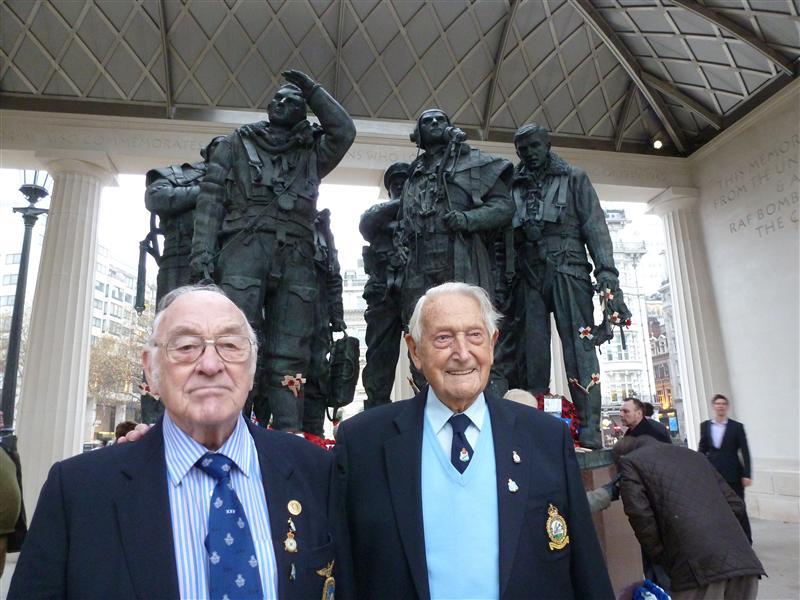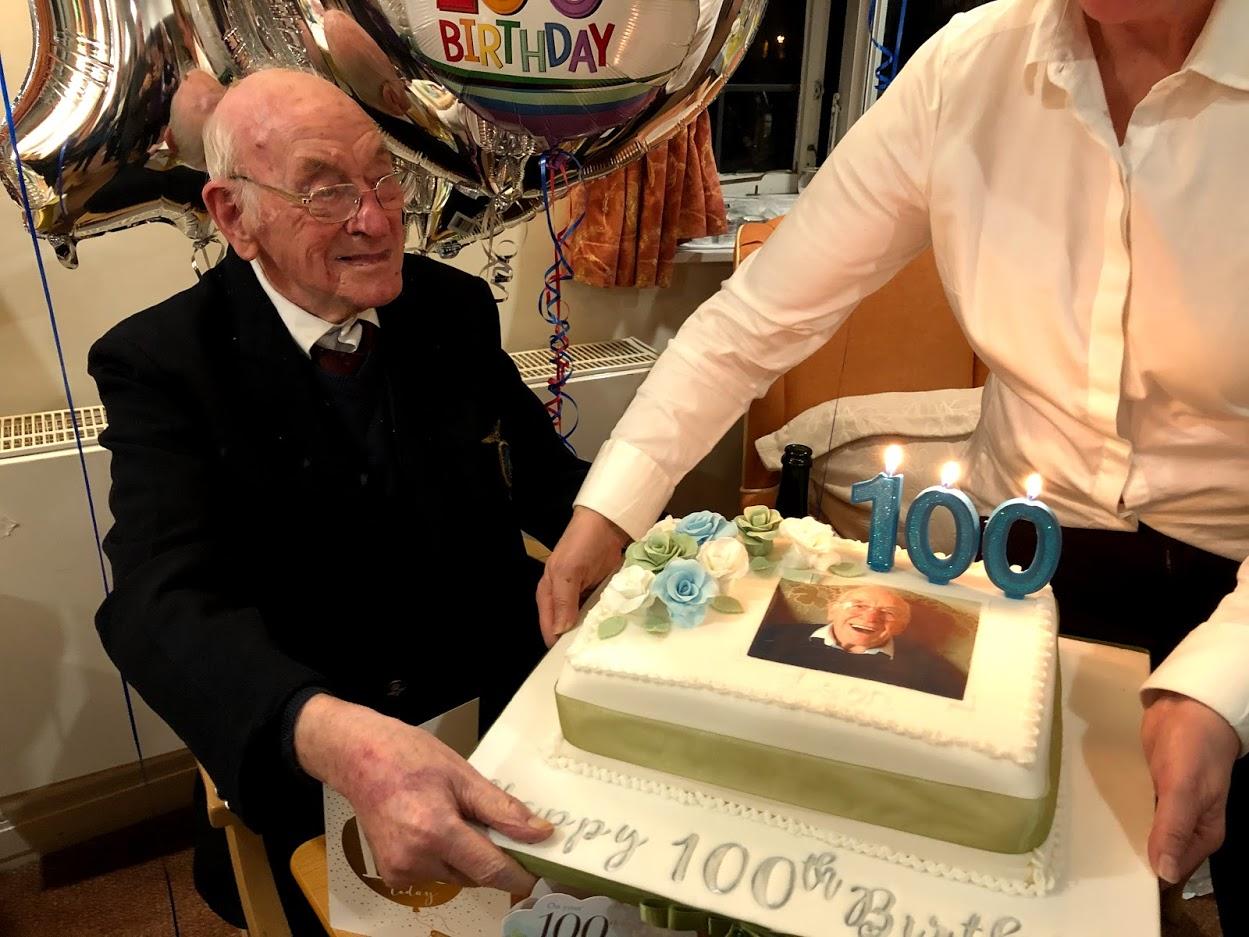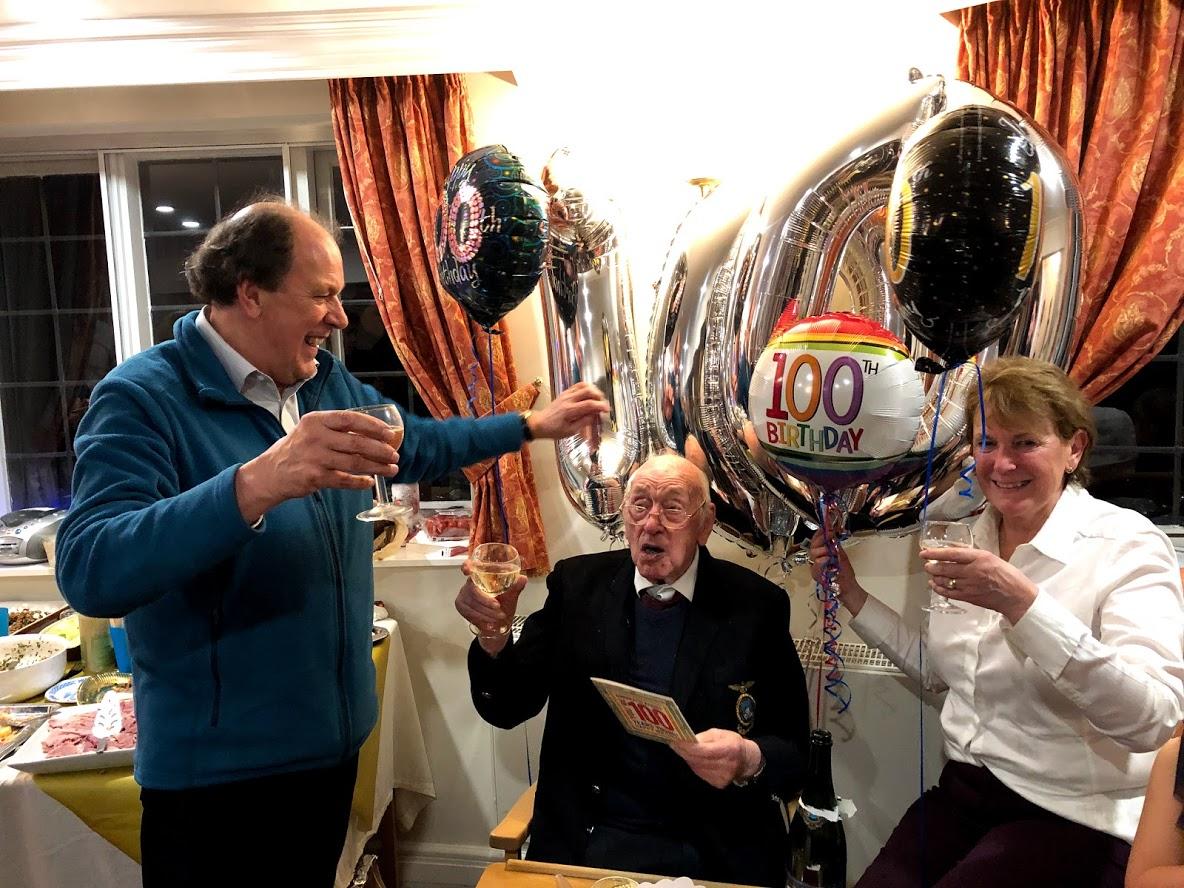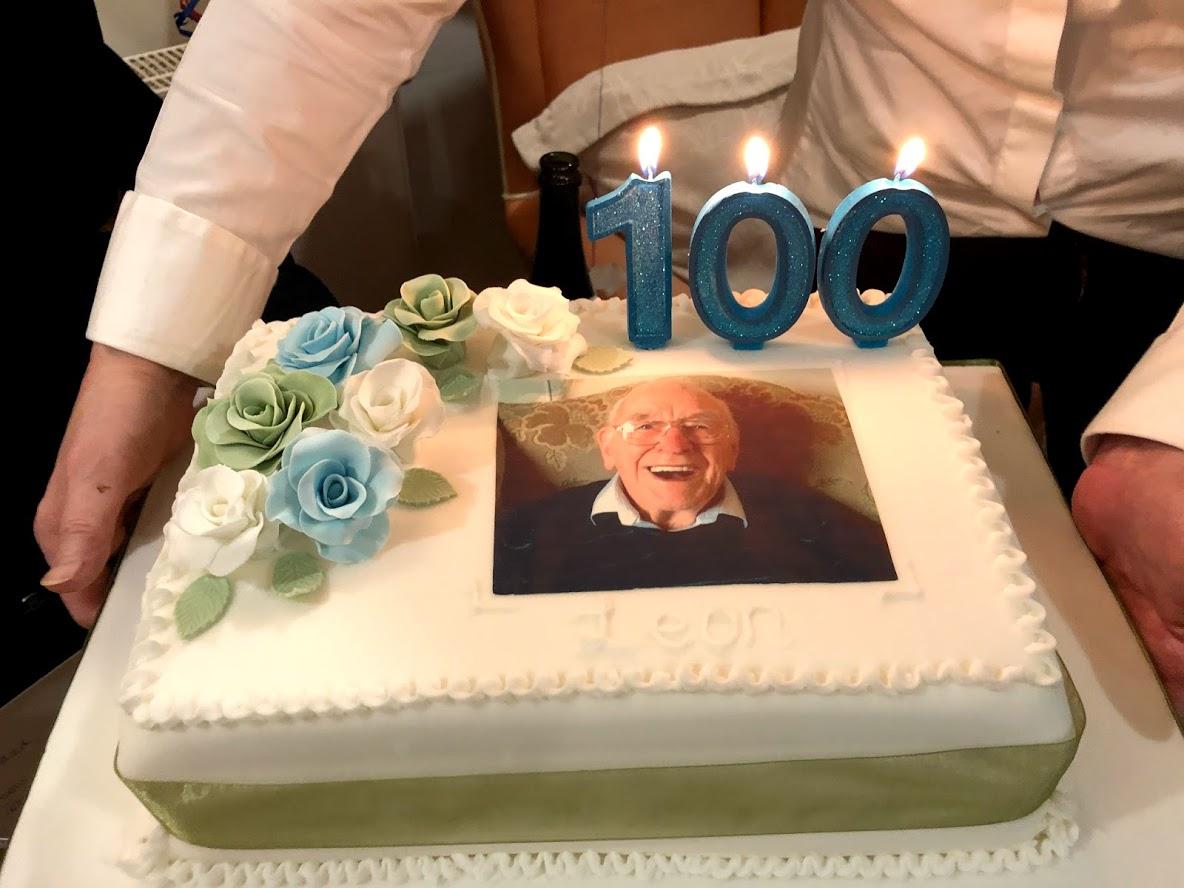Leon V. Armstrong. Squadron Leader 81749
Story - Leon Armstrong's RAF Career.
My flying experience started with a five bob hop in 1935 when I was 15, in an aircraft of Alan Cobham's Flying Circus at MAYLANDS airfield near Brentwood, Essex.
In early 1939, just before the outbreak of the war, I applied to join the Royal Air Force Volunteer Reserve (RAFVR) as an Air Observer. I was 18 and failing the medical examination because of a dicky heart was put back 6 months. When war broke out in September 1939, I was informed that recruiting under the VR Scheme had been terminated.
I went to a Recruiting Centre, was attested as an Aircraftsman 2 and given a service number which I've forgotten but I believe is something like 925075 (my first service number.) I returned to work as a telecommunications apprentice as the flying training course had not yet been set up. I then saw an advertisement calling for men with technical experience to apply for training as RAF Signals Officers. I did and soon received two letters by the same post, one addressed to me as 81749, (my second service number). P/O L V Armstrong please report to RAF Station, LOUGHBOROUGH to start the officers' training course. The other letter was addressed to 925075 AC2 Armstrong LV and ordered me to report to RAF Station, UXBRIDGE. for basic aircrew training. At an interview at Air Ministry, my UXBRIDGE posting was cancelled and I went to LOUGHBOROUGH.
After an induction course, I was posted to RAF Station, WYTON as a supernumerary to await a Radio Course at RAF Station. CRANWELL. At the end of the course, I responded to an Air Ministry Order calling for non-aircrew officers to volunteer for flying duties. A signal from Air Ministry arbitrarily terminated my commission. An appeal to the Station Commander was fruitless. I went back into civilian life. Undeterred now to get into aircrew, I went to a Recruiting Centre, was attested in the rank of AC2, as a U/T (Under Training) Pilot and given my third service number, 1388580. I was posted to a holding unit at BABBACOMBE and to an ITW (Initial Training Wing) at PAIGNTON, thence, in July 1941 as a Leading Aircraftsman, to PDC (Personnel Disposal Centre) WILMSLOW, and by HM Troopship to HALIFAX and PDC TORONTO, thence to US Naval Air Station, PENSACOLA, FLORIDA for flying training with the US Navy. I reached Pensacola in July 1941 in a contingent of 62 RAF and 40 FAA men, the first party of Brits to go there. America was neutral and we all had to wear issue civilian clothes off the base.
After learning seamanship by rowing a pinnace around the harbor, we started ground school instruction, followed by Pilot training with an instructor in an N3N3 primary training aircraft. Flying times in USAwere recorded in decimals of an hour, not in hours and minutes as in UK. After an Up-check I soloed after 14 hours of instruction which had been interrupted by three months in hospital. There followed more advanced airmanship stages, after each of which, trainees were given a check by a different instructor. An Up-check allowed progress to the next stage. A Down-check had to be followed by two successful Up-checks, otherwise it was a return to Canada for re-deployment, perhaps as a Navigator. 100 hours flying was given in the primary trainer after which it was progression to basic training on SNV's (Vultee Valiants) and OS2U3's (Kingfishers) including 3- and 9-plane formation flying. This took 31 flying hours to complete and was followed by 18 hours under the hood in SNJ's (Harvards) for instrument flying.
There was then a big jump from single-engined land planes to twin-engined flying boats for patrol bombing instruction, first in the P2Y (Consolidated Sesqui-plane), then in PBY2's (Consolidated Catalinas) on dual, then 2nd pilot and 1st pilot, totaling in all 39 hours. I left Pensacola in June 1942 with US Wings of Gold and RAF Pilot's Wings as a qualified Catalina Sergeant Pilot having flown 155 1/2 hours on all types.
In July 1942, I returned via MONCTON by HM Troopship to UK. The ship's RAF compliment was quarantined for two weeks under canvas at RAF Station PADGATE due to an outbreak of smallpox on board the troopship. Then followed a posting in August 1942 to PDC BOURNEMOUTH. I was promoted to Pilot Officer with my fourth service number, believed to be 124741, and transferred from Sergeants' billets in the Majestic Hotel to the Officers' Royal Bath Hotel. In November 1942, I was posted to a GR (General Reconnaissance) Course at RAF Station. HARROGATE.
There was a shortage of Catalina aircraft and a glut of Catalina-trained pilots so I was posted to an AFU (Advanced Flying Unit) at RAF Station, LULSGATE BOTTOM, Bristolto fly land-based Oxford aircraft on which I completed 40 hours on type. Thereafter I never flew another Catalina. Then in January 1943, I was posted to No. 3 (C) (Coastal Command ) OTU, (Operational Training Unit) at RAF Station, CRANWELL, to fly 51 hours on Whitley aircraft as 2nd pilot to a Canadian captain and to form a 6-man crew. We deployed to 612 (C) Sqdn. at RAF Station, WICK, Scotland, in March 1943. My first operational flight was as a convoy escort on 14th March nearly four years after I'd tried to join up! At long last!
There followed hours of anti-submarine patrols, air-sea rescue searches and convoy escorts 400 miles out into the Atlantic and out to Iceland and Norway. The only exciting episode was when the navigator lost the plot, the radio went U/S (unserviceable), and we couldn't get a fix but knew we were approaching high ground, but where? We were rescued when the radar operator picked up WICK radar beacon on which we homed. Thank-you, Sir Robert Watson-Watt for your invention!
The Squadron was deployed to RAF Station, DAVIDSTOW MOOR, Cornwall, and my last trip in a Whitley was one of 10hrs.20mins. in May '43 down the Bay of Biscay to the Spanish coast and back to Bishop Rock Lighthouse twice, on a submarine hunt. Converting toWellington aircraft, the squadron experimented with the Leigh Light, a maneuverable searchlight fitted in the belly of the aircraft and controlled remotely up and down and roundabout by the second pilot in the nose. The idea, pioneered by W/C Leigh, was to locate a submarine on the surface at night by radar and home on it, come down to 50 feet, strike the arc of the searchlight to illuminate the submarine and to straddle it with depth charges. Hours of test flights, towed target bombing and navigational exercises with HM Submarines in Plymouth Bay were undertaken. In all, a virtually uneventful first tour of 15 sorties on maritime work of convoy escort, submarine patrol, anti-shipping and air sea rescue.
I was then posted from 612 Sqdn. to a captain's course at RAF Station, WITHEY BUSH,South Wales, on Wellington IC's. Solo-ing as a Wellington pilot in September '43 I flew almost every day in various exercises, acquired a crew' of five, a 2nd pilot, a navigator and 3 Wop/Ag's then progressed to Wellington VIII's with more powerful engines. More exercises throughout the remainder of September, all of October and, of course, hours of Link Trainer.
In November, my crew and I were posted for operational duties with 172 Sqdn at RAF Station, CHIVENOR,Devon. The posting lasted one day! (But we were on strength.) A mistake was realised and instead of a home posting, we finished up at 303 AFU(Aircraft Ferry Unit), RAF station, TALBENNY, South Wales, to prepare for ferrying aircraft out toNorth Africa.
After a month of familiarisation on type, day and night circuits and bumps, air tests, consumption tests, trips to an MU (Maintenance Unit) to collect and deliver aircraft and a search for a disabled ship in the Channel, we deployed to RAF Station, HURN, Bournemouth to collect and ferry an aircraft to RAF Station, RABAT/SALE, MOROCCO, on 12th February 1944, thence back via Gibraltar to UK by BOAC (British Airways) Dakota. Another ferry trip to RABAT/SALE via HURN on 11th March, we nearly had it on this trip as the port engine ran short of oil and overheated. We had another 1 ½ hours flying time to RABAT/SALE to go; I throttled the engine back, but as we were miles out over the Bay of Biscay, I ordered a distress signal to be sent. On arrival at RABAT, the ground fitter found about a pint of oil left in the tank.
There was a flap on in the Operations Room and I learnt that they had lost contact with an aircraft inbound from the UK, having received a distress call. It was me, of course, as I had failed to tell the radio operator to cancel the distress call on landing. Operations were trying to find me. Black looks and red faces! Profuse apologies were offered.
Our crew were posted, via BLIDA PDC,(Personnel Disposal Centre) to 458 (RAAF) (Royal Australian) Sqdn, BONE, ALGERIA, which was equipped with Leigh Light Wellingtons, for our second operational tour. Flying for me started on 1st April '44. Part of the squadron went on detachment to RAF station, LUQA. MALTA. 19th April was described as "Black Thursday" as 4 aircraft were bent or destroyed in accidents on that day. One aircraft, flying in from BONE, collapsed an undercarriage on landing and was left sitting in a heap in the middle of the runway.(Damage No.1 .) Other aircraft were forced to use the cross-wind runway and one overshot and hit a wall.(Damage No. 2.)
I took off on the cross-wind runway in a fully loaded Leigh Light Wellington to escort two destroyers in the Mediterranean. I had just lifted off when the starboard engine backfired and only half power could be obtained . I staggered round at 200 ft. and in a low approach over a quarry within yards of the runway, was caught in a down draught and sank into the quarry. I just managed to get the main wheels above the lip of the quarry but couldn't clear the tail. The fuselage struck the edge of the quarry just forward of the tail wheel severing everything aft, leaving the rear turret standing up at the end of the runway like a country convenience. (Damage No. 3.)
The standby crew were scrambled to undertake my sortie and on return in darkness, found Malta in cloud. The aircraft was seen to spin in and crash in flames at the end of the runway. Four crew members were killed. (Damage No. 4.) There followed a return to BONE, with endless convoy escorts, anti-shipping sweeps, bombing of oil installations, air sea rescues and submarine hunts in cooperation with destroyers. On an air sea rescue operation for a ditched Spitfire pilot south of TOULON with a Beaufighter aircraft escort, we were attacked by two Italian Arado fighters. As the Beaufighter chased them off, it was damaged by M/G fire but returned to base safely.
Shortly afterwards, the squadron was deployed to ALGHERO. Sardinia to cover the Allied landings on the beachheads of Southern France on 24thAugust '44*. Although briefed to avoid over-flying Allied ships and landing craft, this became impossible. It was a pitch black night and although I didn't see a thing on the water, my radar operator reported hundreds of craft below.
Whilst at Alghero, I was called to see the Adjutant who informed me that the Air Ministry had given me another service number. I enquired what it was and was informed, 81749. "Oh!" I said, "I've got my old number back."
Deployment to RAF Station,FOGGIA,Italy, followed in September '44- thence a short detachment to FALCONARA, near Ancona, just south of Rimini, to enable shipping strikes and bombing of oil installations around the Adriatic to be carried out.
A two- month Junior Commanders' course in Malta was then undertaken. Returning by a SAAF (South African) Dakota at the end of January'45, I found the squadron on the move to RAF GIBRALTAR. I followed in an American Dakota to find that I'd been promoted to Squadron Leader and in command of "A" Flight.
Three anti-U-Boat patrols in the Western Straits at night were undertaken and two exercises with a British submarine. Later, I was entertained on board, a very pleasant, unusual and claustrophobic experience. I gave evidence at a Court of Enquiry after one of the squadron aircraft flew down the Leigh Light beam into the water when homing on to a towed target on an exercise finishing up in the drink with the loss of all crew members except the second pilot who was in the nose operating the search light. The war in Europewas to end in a few days; what a terrible tragedy.
Thus I came to the end of my flying career, apart from a few local flying trips later, I'd flown 61 operational sorties totaling 387 hours. I went on to fly a desk in the Aircraft Accident Investigations Section at Command HQ.Caserta, (Naples) and Cairo to which I'd been posted before coming home toUK for demob. Total flying time in 6 years service with the RAF, 1,062 hours. Not all that spectacular but, after a few scrapes and dicey does, I was all in one piece to which thousands of other servicemen were unfortunately denied. I left the service on April Fools Day 1946!
Summary:-
I've had four different service numbers (one of them twice) and was on the books of over 40 different stations, squadrons, units and troop ships during the war, (some of them twice, one of them for one day only!) They are:-
Recruitment centre(1),
Uxbridge,
Loughborough,
Wyton,
Cranwell (1),
Recruitment Centre(2),
Babbacombe,
Paignton.
Wilmslow,
HM Troopship(l),
Toronto,
Pensacola,
Moncton,
HM Troopship(2),
Padgate,
Bournemouth,
Harrogate.
Lulsgate Bottom,
Cranwell(2), Wick,
Davidstow Moor,
Chivenor(I)
Haverford West,
Chivenor(2).
Talbenny(1),
RabatSale(1).
Talbenny(2).
RabatSale(2).
Maison Blanche.
Bone.
Malta(1).
Alghero.
Foggia.
Ancona.
Malta(2),
Gibraltar,
Portici,
Caserta,
Cairo.
Geneifa.
HM Troopship(3).
Hednesford
and numerous other stations visited or in transit but not on strength.
Total flying hours:- 1,062 on which:-
Operations completed:-
First tour:- 15 sorties. 125 hours.
Second tour:- 46 sorties, 262 hours.
Total:- 61 sorties, 387 hours, (excluding ferry trips totaling over 16
hours which were officially regarded as operational sorties.)
LEON V ARMSTRONG.
30TH JANUARY 2007.
Leon at RAF Club London.UK. 2012
